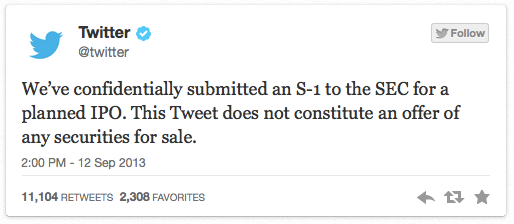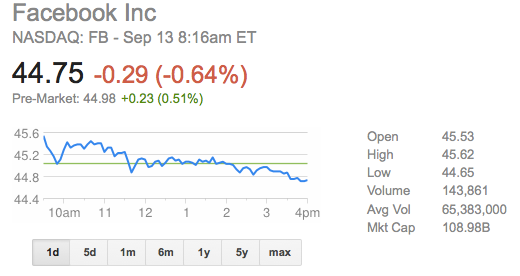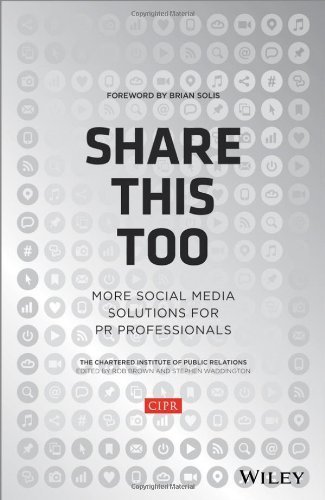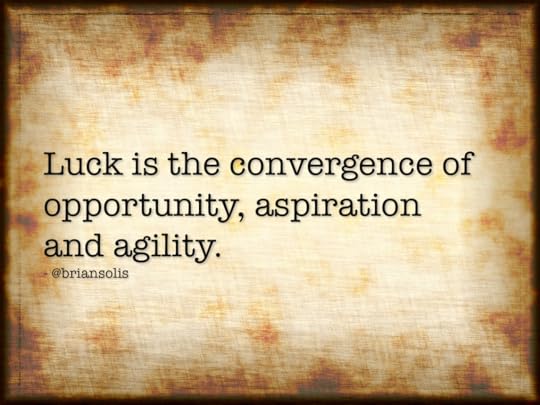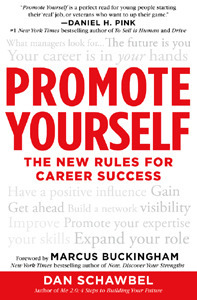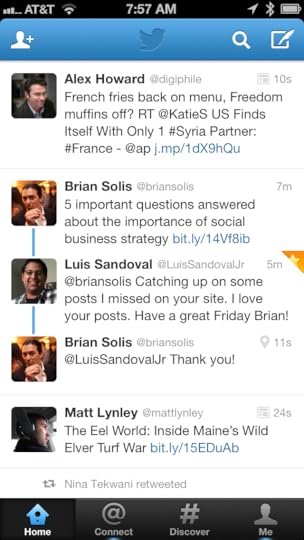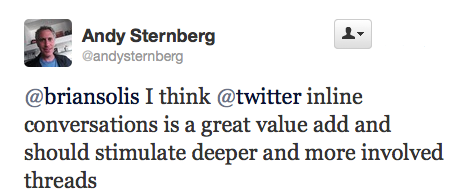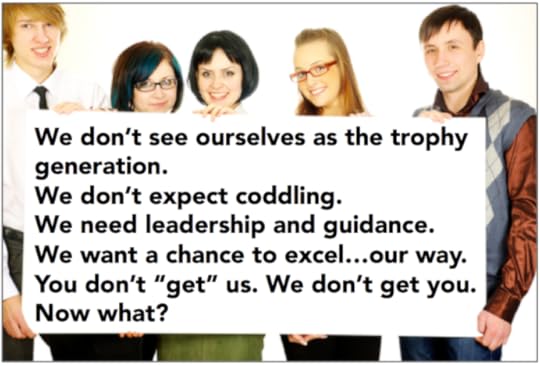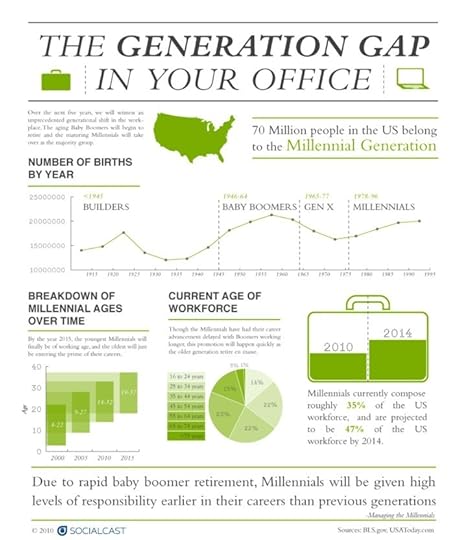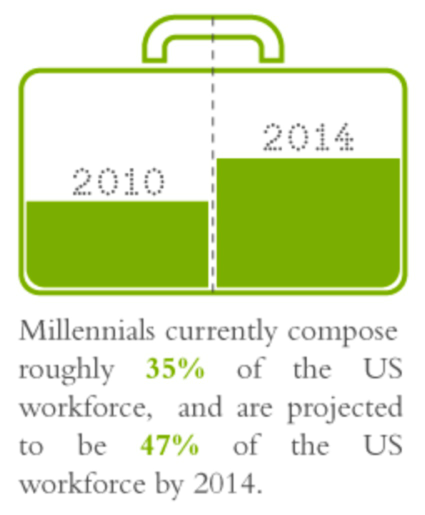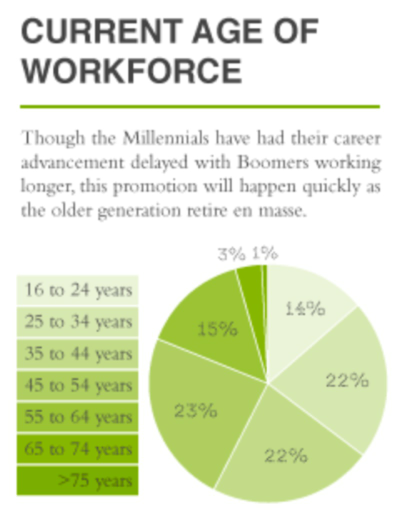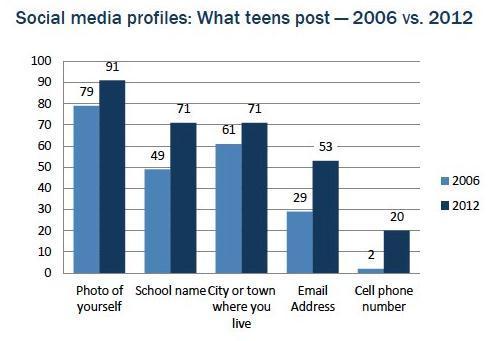Brian Solis's Blog, page 115
September 19, 2013
Announcing This Year’s Theme and Agenda for the 2013 Pivot Conference: The Total Digital Experience
Companies at the leading edge of change are recognizing that Social isn’t the catalyst for transformation, it is a shift in human behavior that changes everything. Social and its partner in change, mobile, can’t be limited to particular campaigns or even to specific departments. This revolution impacts employees and customers and all parts of the enterprise. There are no boundaries now; everything is integrated.
This year at Pivot, we will be exploring topics that reset our perspective of where we are and where we’re going including, The New Emerging Economies, driven by sharing, empathy and co-creation; The Rise of Integrated Experiences; The New Media-Audience Dynamic; Innovation and The Future-Ready Organization; The Confounding Power of Content; and the Long-term Impacts of Social on both business and society.
Agenda
To bring these themes to life, we have assembled a rich array of speakers including GM’s leader of business transformation, the NFL’s head of emerging experiences, Intel’s head of Ambassador program, the CEO of Monster.com, the CMO of Marsh-Mclennon, Kraft Food’s director of corporate affairs. They will be joined by senior execs from Ben&Jerry’s, Southwest Airlines, Pepsi, ADT, SalesForce and many others.
Alongside brands will stand some of the most foreword-thinking executives, analysts, academics and futurists on the Social Revolution. Esther Dyson, David Edelman of McKinsey, Douglas Rushkoff, Mark Anderson of Strategic News Service and Pete Cashmore, CEO of Mashable, will all speak to the Pivot 2013 audience.
As always, Pivot interposes thought leaders from adjacent industries to test and reshape our perspective. Novelist Neal Stephenson will talk about the future of storytelling. Covert Affairs star Chris Gorham, will discuss his new relationship with his audience. AOL co-founder, sports team owner and tech legend Ted Leonsis will show how he is remaking the business of movies.
See the full speaker and agenda list here.
We can’t wait and we hope to see you there with us at Pivot 2013 in NYC on October 15-16. Use code “BrianNetwork” to receive a 30% discount.

Announcing This Year’s Theme and Agenda for the 2013 Pivot Conferece: The Total Digital Experience.
Companies at the leading edge of change are recognizing that Social isn’t the catalyst for transformation, it is a shift in human behavior that changes everything. Social and its partner in change, mobile, can’t be limited to particular campaigns or even to specific departments. This revolution impacts employees and customers and all parts of the enterprise. There are no boundaries now; everything is integrated.
This year at Pivot, we will be exploring, at Pivot this year, such key areas as: The New Emerging Economies, driven by sharing, empathy and co-creation; The Rise of Integrated Experiences; The New Media-Audience Dynamic; Innovation and The Future-Ready Organization; The Confounding Power of Content; and the Long-term Impacts of Social on both business and society.
To bring these themes to life, we have assembled the richest array of speakers in Pivot history. On-stage conversations will include: GM’s leader of business transformation, the NFL’s head of emerging experiences, Intel’s head of Ambassador program, the CEO of Monster.com, the CMO of Marsh-Mclennon, Kraft Food’s director of corporate affairs. They will be joined by senior execs from Ben&Jerry’s, Southwest Airlines, Pepsi, ADT, SalesForce and many others.
Alongside the brands will stand some of the most brilliant thinkers on the Social Revolution. Esther Dyson, David Edelman of McKinsey, Douglas Rushkoff, Mark Anderson of Strategic News Service and Pete Cashmore, CEO of Mashable, will all speak to the Pivot 2013 audience.
And, as always, Pivot interposes thought leaders from adjacent industries to test and reshape our perspective. Novelist Neal Stephenson will talk about the future of storytelling. Covert Affairs star Chris Gorham, will discuss his new relationship with his audience. AOL co-founder, sports team owner and tech legend Ted Leonsis will show how he is remaking the business of movies.
See the full speaker and agenda list here.
We can’t wait and we hope to see you there with us at Pivot 2013 in NYC on October 15-16. Use code “BrianNetwork” to receive a 30% discount.

September 13, 2013
Twitter Files for IPO – What it means for users, investors, and social media
By now you’ve heard that Twitter IPO will fly soon. On the heels of its release of the controversial Conversations feature, Twitter announced, via a Tweet of course, a confidential S-1 filing for a planned IPO. In fact, just last week, I shared with ABC News that we needed to prepare for the inevitable. While many experts are jumping on their platforms to shout that it’s about time, many investors are smirking with clasped hands, understanding of course that in the game of ROI, this is in fact the right time. With over $1.16 billion in funding and an estimated market valuation at somewhere between $9 and $10 billion, Twitter’s patience and timing will serve amongst its greatest assets.
At Altimeter Group, each of the analysts cover Twitter in respect to each of our beats. In this case, I follow Twitter and study its impact on media, society and business. When it comes to an initial analysis of the meaning of Twitter’s IPO, my colleague and Altimeter Founder Charlene Li has us covered. Instead, I’d like to explore what this IPO means in the greater scheme of social media.
See, in addition to the role of an analyst, I’m also a user and stakeholder. I opened my @briansolis account in November of 2006. For me, like you, Twitter is personal. I wrote my first in-depth post about Twitter in March 2007 suggesting that the information network would be the “message heard around the world.” Since then, I’ve worked with or supported notable thought leaders around…
- #hashtags
- The first Twitter wall at conferences
- Early Twitter apps
- The Twitterverse
Now it seems that I’ll have an opportunity to move from stakeholder to shareholder and so will you.
Twitter isn’t Facebook nor is it YouTube or LinkedIn…meaning it’s not a traditional social network or social platform where its inherent benefit and worth is clear upon landing on its home page. It’s an information network that’s a unique blend of broadcast and conversation platform and therefore Wall St. will find it difficult to properly assess its value and growth potential. Let’s not forget that for its first few years of existence, one of the top Google auto-completes around Twitter was, “what is Twitter?”
All of this is enigmatic naturally…or “natch” as my good friend Kara Swisher would say. This is why Twitter hired Mike Gupta as its finance chief. In a recent article in the San Francisco Chronicle, Twitter investor and partner at Benchmark Capital Peter Fenton said of Gupta, “A lot of people are trying to understand, ‘How does this thing work? How does it make money?’ He has a layman’s ability to simplify and express it in a way that’s not overly complicated.”
Gupta will only help.
Twitter is complex to explain to say the least. While its unique technology and fervent userbase are significant, its Twitter role in society that has opened a new window to the world. Twitter is a human seismograph, recording details around culture, politics, trends, and anything else that people find Tweetable. Over the years, Twitter has blossomed into what I call TNN (Twitter News Network) where news no longer breaks, it Tweets. It’s index is powered by human experiences, observations and sentiment. It’s an extension of each one of us and equally a collective consciousness that informs, entertains, distracts, unites, and creates awareness.
Twitter is the last of the big four to go public.
Yes, Twitter is the last of the four big social networks to hit the public market. But that’s an advantage. LinkedIn continually beats estimates and as a result, it stock is on the rise. I’ve always believed that Wall St. understood LinkedIn. I’d argue that many investors and traders managed a personal account and thus understood its value enough to sell it. That wasn’t the case when Facebook hit the market though. As we all know, Facebook’s IPO was marred by a series of setbacks that sent its stock into negative territory almost immediately.
When Facebook officially NASDAQ, its offer price was $38 a share and its valuation was about $100 billion. Facebook was resilient, righting to prove its value to the suits. While its work is far from done, its stock is now 60% north of its opening price following a diligent series of reinforcing and promising earnings calls. Just this week, the stock hit a new high. It doesn’t hurt Twitter that LinkedIn is also roughly 117% up from its opening price either.
So, thanks to Facebook and LinkedIn, Twitter will have a genuine shot at hitting the market on a positive note. Like Facebook, Twitter too is profitable. According to eMarketer, Twitter will bank $583 million in advertising revenue for 2013 and is expected to earn $1 billion in 2014.
Advertising is of course paramount to Twitter. Its promoted products are helping the company not only generate significant revenue, CEO Dick Costolo and co. have the burdensome task of also re-educating Madison Ave. on the future of advertising. The goood news is that under Costolo’s leadership, it’s working.
Like Facebook (that always makes me laugh when I write that), Twitter’s future is tethered to mobile engagement and advertising. On September 9th, Twitter acquired MoPub, a mobile ad exchange/publisher network, for $350 million in stock.
As for its share price and growth rate, we’ll have a chance to see when its S1 becomes public. In the mean time, we’ll wrap up on the words of Mark Zuckerberg. His advice to Costolo was shared on stage this week with Michael Arrington at TechCrunch Disrupt in San Francisco,”As long as they (Twitter) kind of focus on what they are doing, then I think it’s wonderful.” Zuckerberg also shared a personal lesson from Facebook’s IPO, “I’ve been very outspoken about staying private as long as possible … But in retrospect, I was too afraid of going public. I don’t think it’s necessary to do that.”
Connect with me: Twitter | LinkedIn | Facebook | Google+ |Youtube | Instagram

September 11, 2013
The Future of Marketing Has Little To Do With Marketing
While I don’t always have the ability to say yes to writing forewords, I do find time now and then to do so. One of the conditions however is that I’m allowed to share my thoughts, unabridged, with you here. The latest is for a new book, Share This Too, released by Wiley, the publishing house that I also worked with on #WTF, #EOB, #Engage. Thank you to my good friend Paul Fabretti for the opportunity…
The follow up to Share This: The Social Media Handbook for PR Professionals, Share This Too is a practical handbook that outlines the changes taking place in media and marketing. Written by 24 marketing and public relations practitioners, the book covers the state of the media and public relations industry, social media strategy, technology and social networks, online media relations, monitoring and measurement, new skills and expertise, and the future of the industry.
Without further delay, allow me to share this (foreword) too…
The Future of Marketing Has Little To Do with Marketing
Do you realize just how much is changing right now? I promise you that it’s bigger than you think. And your role in this is also much grander than you know or believe. See, disruptive technology, social networks, new influencers, they’re leveling the media hierarchy. The ado of crafting messages, pushing them upon targets, and propagating while attempting to control your story is not only the old way, it’s the very thinking that’s at the forefront of new communications.
This isn’t about the new tools that are before you.
This isn’t about social media or popular social networks.
This isn’t about bloggers and blogging.
Nor is this about tablets, smartphones, and the app economy.
This is about putting the public back in public relations and social in social media and that has nothing to do tools or technology we overly celebrate today. Slow down. Take a breath. While there’s an abundance of change there isn’t a wealth of innovation in processes or methodologies.
The truth is that in a time when we could change everything, we’re running without clarity of direction or vision. We’re not necessarily talking about a revolution as much as we’re conforming revolutionary opportunities into familiar packages. We’re merely taking what we know and applying it to what’s new. In many ways, we’re working against ourselves. But, what’s happening right now is both revolutionary and evolutionary. And in the face of the unknown it is courage the carries us forward and creativity that will open new doors.
Image Credit: Shutterstock
This is a time to rethink the value proposition of marketing and communications and your role within it.
Why is what you do important? Stop. Try that answer again. There’s a reason that your friends and family have a hard time understanding what you do for a living. It’s because the value you think you provide and the opportunity that is presenting itself to you are in fact two very different things. Essentially, your experience carried you this far but it is your vision and ambition that will carry you forward. Think again about the value you offer and the value that others say you deliver.
Allow me to share a slice of my life with you…
I’ve fond memories of surfing. I would grab my board and wetsuit, play great music, and head for the beaches of Southern California. The ocean was my sanctuary as I would surf for recreation, therapy and also tranquility. There was just something about the smell of the ocean, the sound of the waves, and the ability to dance with Mother Nature in a way where she let you lead and you appreciated the momentary gesture.
When snow boarding grew in popularity, I immediately embraced it. I did so because I saw it an art form that was easy to categorize against something familiar. In fact I thought of it as winter surfing and I was wrong to do so. I brought to something new my previous experience and expected it to carry me forward into new territory in a very different environment. What I didn’t bring along was a new and open mindset. I over confidently got on my board, leaned back as you do in surfing and set out to surf that mountain the way I thought I should. I learned, quite painfully, that I did the very thing that you’re not supposed to do. See, in surfing, and skateboarding, your back foot is essentially the rudder. You steer by leaning back and using your back foot to steer your course. In snowboarding, it’s the exact opposite. You lean forward.
All it took was someone to point out that there was a different philosophy to the approach. Once they did, I was as soulful on a snowboard as I was surfing. It just took an open mind, perseverance, and several ice packs.
Today in what is nothing less than an emergent moment for marketing and communications, I see even the best of them leaning back instead of leaning forward. It takes a different philosophy. It takes a different approach. If you take a moment to think about it, everything is different about what’s taking place now and its direction and future is unwritten.
Again I ask. What is the value of what you do? What’s in it for you, your business and those with whom you engage? This time, think about it beyond the company you represent. Think about it from the perspective of the people you’re hoping to reach…every step of the way. People are part of everything you do now and you are also among them.
Value is not boundless. Value in the eye of the beholder and it varies based on the context of the relationship and your desired outcomes. It is relationships after all that form the foundation of business. Marketing and communications are merely enablers for conveying value while also investing in and reinforcing relationships.
What you do and how you do it now serves a higher purpose. This is why I believe that your role in this is much grander than you may realize or believe. Lean forward.

September 3, 2013
The Truth About How Social Media Has Impacted Employees
Guest post by Dan Schawbel (@DanSchawbel), a Gen Y career and workplace expert, the Founder of Millennial Branding and the author of the new book, Promote Yourself: The New Rules For Career Success (St. Martin’s Press).
Back in 2007, I created the first social media position at EMC Corporation, a Fortune 200 technology company based outside of Boston, MA. Back then, selling the idea of social to the company was extremely tough because it was so new, management was afraid and there was a lot of red tape. I would have to present case studies from competitors and partners to prove it’s worth, citing DELL and NetApp as examples. This is what most social media professionals had to do back then and now, since there are enough case studies, it’s less about the convincing and more about the doing. The one thing that doesn’t get discussed enough is how employees are using these tools to build their own careers at their companies. The research I did, in partnership with American Express, for my new book might surprise many of you.
Last year, we surveyed 1,000 millennial employees and 1,000 of their managers and we found that social media has still not been embraced and taken seriously in the workplace. Few managers and employees view social media skills as being important to their jobs and when it comes to promoting. Managers aren’t particularly comfortable connecting with their employees on social networks. When it comes to who owns an employee’s social media profile, many managers believed the company did instead of the employee. Here is a breakdown of the results from the study and what they mean to you and your job moving forward:
Do managers care about social media skills when promoting?
Relative to social skills (interpersonal skills) and hard skills (technical skills), social media skills are viewed as the least important at work. The value of social media in the workplace hasn’t been tapped by companies yet and few managers and employees put an emphasis on using social media tools for business related activities. That being said, employees have adopted social media tools for business slightly more than their managers. Only 16% of managers and 17% of employees view using social media profiles to actively contribute to online industry conversations as either very important or extremely important. Only 12% of managers and 17% of employees view using social media profiles to build a following on social networking sites as being very important or extremely important. 16% of managers and 19% of employees think that using social media profiles to promote their company is very important or extremely important.
I expect these numbers to grow in the future as the tools get adopted more and millennials become the majority of corporations. Millennials are constantly using these tools to build their own hard and soft skills and change the way business is being done.
What are social media relationships between managers and their employees really like?
The relationships managers have with their employees on social networks is shaky and uncomfortable based on this study. Overall, employees are more comfortable being friends with managers on social and professional networks than their managers are. When it comes to Facebook, only 14% of managers are either very comfortable or extremely comfortable being friends with employees, while 24% of employees said the same. When millennials become managers (15% of millennials are already managers), they will be more comfortable with social media relationships and view them as a way to build a network and drive business forward.
For the study, we also looked at managers searching for information about their employees online and the reactions to what they share. In every instance, more managers look up information about employees online than employees looking up information about their managers. Overall, both groups aren’t using the web to research for information on each other. When it comes to social networking sites (i.e. Facebook and Twitter), 81% of managers don’t look up information about their employees and 83% of employees don’t look up information about their managers. Out of those who said yes, more younger managers would look up an employee than older ones.
Managers and employees are careful when using social networks. Although you hear about those extreme cases of employees being fired for social media mishaps, they are rare. For instance, 88% of managers and 92% of employees haven’t noticed anything inappropriate and 91% of managers and 97% of employees haven’t spoken to the person misbehaving online. Only 4% of managers have disciplined an employee from what they’ve said online.
Managers and employees will continue to check up on each other online out of curiosity and for relationship building purposes. Obviously, common sense is important when you’re posting and sharing online because you are what you post. If you’re posting questionable things online, it will increasingly haunt you in the workplace because that information is just a click away.
Who really owns your social media profiles?
By now, you’ve probably heard about the PhoneDog vs. Noah Kravitz case in which PhoneDog felt that they owned Noah’s social media profiles. For the study, I was curious to find that many managers felt like his profiles should be given back to his employer. Millennial employees feel that they should own the rights to their own social media profiles even if they use them during work hours. Fewer managers agree that their employees should. Out of the managers, only 54% said that employees should have the rights to the profiles, yet 69% of employees said they should have them.
Social media profiles are sacred to millennial employees. They use their profiles to connect their personal and professional lives together and most log into them at least once per day. Instead of confiscating profiles, have social media guidelines and best practices so they know how to best use them to support the company. By encouraging social media use, you will attract and retain better Gen-Y talent.

August 30, 2013
Will Twitter’s New Conversations Hinder or Spark Conversations?
Twitter recently announced “Conversations,” a new feature that connects conversations via a blue vertical line. This new feature believe it or not has sparked a red line between love and hate. Ironically, this impassioned back-and-forth demonstrates the value of Conversations.
For years, Tweets appeared in a reverse chronological order. Now, you can see connected conversations in chronological order within your normal stream to follow real-time dialogue. To follow deeper threads, Twitter includes a clickable link to instantly “view replies.”
ABC News’ Technology Editor Joanna Stern reached out to talk about the controversial update. While some of my thoughts made the cut, I wanted to share the entire conversation with you here.
For years, one of the most common search phrases in Google for Twitter is, “What is Twitter.” To this day, mainstream has yet to truly understand what Twitter is and where it fits in the world of social networks. Is it a social network? Is it an information network? Is it a public IM stream? The answer is yes to all of the above. Conversations are as important to Twitter as #hashtags. This new feature allows you to not miss out on important dialogue. And, when you think about it, Conversations extend the 140 character limit allowing people to share their thoughts while tethering them in a coherent and sequential flow.
There’s more to the story as well. Twitter is setting the stage to take the company public. Investors expect a return. Employees expect earn out. To do so, Twitter will need to make engagement more intuitive for the masses. Tweets have been asynchronous to date. Adding a conversation feature does just that, promote conversations beyond one-off tweets. If the lifespan of a Tweet meme is minutes, conversations theoretically would introduce longevity into the mix thus keeping people engaged in micro conversations within the greater real-time conversation.
As for pushback, we’ll have to get used to it. Twitter is headed from Main St. to Wall St. sooner than later.
My new book…#WTF
Connect with me: Twitter | LinkedIn | Facebook | Google+ |Youtube | Instagram

August 26, 2013
5 important questions answered about the importance of social business strategy
Charlene and I recently published a report that documented the 6 Stages of Social Business Transformation. In the process, we discovered the most common mistakes and successes businesses experienced along their journey. What was most surprising however, not really, was the cavernous disconnect between social media strategy and overall business objectives.
- Only 34% of businesses feel that their social strategy is connected to business outcomes.
- Just 28% of companies we studied feel that they have a holistic approach to social media, where lines of business and business functions work together under a common vision.
- Only half said that top executives were “informed, engaged and aligned with their companies’ social strategy.”
The report was written to help strategists bridge the gap by understanding where they are, where they want to be, and how to get there efficiently. Charlene and I also noticed that the most elite companies among those we studied shared seven success factors in their social business strategy. Rather than publish a follow up report, we experimented with an ebook format. The result is a 100 page resource guide that will help you expedite and enhance your path to transformation.
As we were preparing for launch, our publishers, Josie Bass, asked an important question upon release of the ebook, “what does it really mean to be a social business and why is it important?” From there, it lead to an in-depth conversation where we answered a total of five questions designed to help you push forward when others push back.
Remember, informed and inspired persistence overcomes resistance.
What does it mean to be a social business?
A social business is more than social media and the Likes of Facebook, Twitter, Pinterest, et al. Yet, it’s a term that’s often confused with social media strategy. There’s an important difference between a social business and a social media strategy.
Each represent distinct qualities for which “social” is simply a qualifier. In front of media, social is an adjective that describes the nature of channels, networks, or platforms that facilitate conversations online. When placed ahead of business, social articulates a philosophy or approach.
In this case, “social business” is a philosophy, a way of business in which social technologies supported by new approaches facilitate a more open, engaged, and collaborative foundation for how we work.
How do you convince companies to see social media as more than just, “a necessary nuisance?”
The fact that social media and social business still cause debate or even confusion after all these years is understandable. Many executives see social media as a novelty or a distraction for young adults and kids. They haven’t realized the impact of social networks because they either don’t have time, can’t see the value, find it difficult to keep up with all of the networks, or a combination of all of the above.
Coming back to the differences between social media and social business, it’s important for any social media or digital strategist to learn the language of the C-Suite. In this ebook, we share insights from several top executives to understand what it takes to convince them of the true opportunity that social business promises. We’ve heard time and time again that their priority and focus is driving business objectives, creating opportunities, and solving problems. They don’t make decisions based on technology or trends, yet strategists tend to emphasize social media rather than business goals.
A social media strategy outlines how a business will employ social networks to engage customers or employees.
A social business strategy starts with a vision for how social media will improve customer and employee experiences and relationships and therefore aligns social media initiatives with business goals and opportunities. Technology thus becomes an enabler for a bigger mission and purpose.
Executives asked that we consider a day in their life. They report to stakeholders and sometimes shareholders. They are measured on business performance. If you do your homework to understand their priorities and align social with their business objectives, you’ll earn their attention. Add to that customer expectations, preferences, and the opportunities and challenges with each and how you can help solve against them. By presenting social in this light, executives can’t help but at least support further research and ultimately pilot programs that lead to bigger initiatives.
In the end, you learn that a true social business strategy employs social as one of the primary channels, not the only channel, to deliver a consistent, connected, and additive experience online, through mobile and in the real world by modernizing and improving the complete customer and employee lifecycle.
What are some criteria that organizations should use to prioritize their social initiatives?
As mentioned earlier, social media strategies are often sparked by technology or trends. I’ve heard strategists focus on Pinterest because of its popularity, not necessarily because there was a clear correlation between Pinterest users, behavior, and business opportunities. This is also true for most popular or emergent platforms.
When you begin with business objectives, social technology and the communities they reach are evaluated against bona fide priorities that already have the buy-in of executives. In this case, we look at business pillars to assess the criteria that contribute to the success of any organization, which can include sales, employee and customer satisfaction, brand resonance, NPS, etc. These pillars represent the primary measures for assessing value in the social business strategy process.
For example, each initiative should be assessed at the functional, line of business, or brand level. From there, ideas must tie value to the organization (business goals) and also consider the team’s ability to execute. Evaluating ideas this way helps prioritize opportunities while uncovering needs, training, support or assets required to properly execute.
How important is it to get the C-suite on board with social business strategy?
In our research, we learned that as social media permeates the enterprise, it typically does so from the marketing or communications department. Usually a social media champion rallies adoption within the organization. As social becomes more prevalent in society, more champions arise throughout the company, seeing it as an opportunity to improve how they do things today. As it gains momentum, it creates an internal groundswell that eventually requires budget, resources, training, and governance to support expansion and introduce enterprise-wide standards and goals.
At this point, social usually hits a ceiling that requires executive sponsorship to truly transform how a company views social’s potential. Anyone experienced in change management will understand that systemic transformation occurs from the top-down. Earning buy-in, making the case, tying strategies to business objectives, learning the language of the C-Suite – this is how strategists can earn support and bring about the change they wish to see. This is true for more than social media of course. But in that regard, getting the C-Suite on board is imperative to launching productive social business initiatives.
Why do you recommend a three-year plan? Is that realistic, considering the rate of technology change?
If there’s one thing we can bet on, it’s that change is not only necessary, it’s slow to appreciate and ultimately unfold. A three-year plan is far enough out to plot a course for transformation but also tangible in the sense that real programs can be deployed now and over time to the benefit of customers, employees and the bottom line.
Remember, social business isn’t about technology; it’s about attaining goals and objectives by improving relationships, driving transactions, and enhancing experiences through channels of relevance. Technology and channels will always evolve and as such, they become enablers for a higher purpose. This is about the ongoing pursuit of relevance.
Click the cover for more information on the ebook and also how Altimeter Group can help:
Connect with me: Twitter | LinkedIn | Facebook | Google+ |Youtube | Instagram

August 21, 2013
The Disconnect Between Aging Management and the Younger Workforce
Are you ready to connect your connected workforce?
With all of the discussions around social media and how it improves the opportunity to engage customers and build more meaningful relationships, we tend to lose sight of another important group…employees. As technology impacts behavior and connects customers and businesses in new ways, the same is true for employees.
With every new social and mobile network, every new smart device, and the materialization of trend after trend, people become increasingly informed, connected, empowered, and also demanding. As a result, businesses are making significant investments in new marketing technology to pursue and engage connected customers where their attention and time is focused. But these same connected customers are also your connected employees. And, how they’re expectations are evolving as well. These digital natives equally require engagement.
Before you can engage externally, you must first engage within.
The Generation Gap
Within your organization, a “C” change is developing, one that will transform the company from the inside out. This C change refers to connectedness as your connected employees will demand new processes and reward systems to satisfy their needs and motivate their professional development. Today, the balance between the generations within is tilted toward Boomers and Generation X. But, in just a few short years, the balance will shift to the Millennial (Generation Y) and how they communicate, collaborate, learn, and grow is much more digital than older demographics can appreciate. For the Millennial, digital is in their DNA.
To visualize the generation gap, ComplianceandSafety.com, a provider of training materials on workplace safety, released a telling infographic that tells a powerful story of the disruption that looms on the horizon.
As stated at the top of the image, “over the next five years businesses will witness an unprecedented generational shift in the workplace.” This will have an almost unfathomable impact on not just how the company operates, but also its operating philosophy and overall culture. If businesses don’t take a proactive approach to defining this over the next several years, it will be defined organically. And, it might not evolve according to a favorable vision and purpose.
Currently 70 million people in the US belong to the Millennial Generation. They represent 35% of the workforce today and by 2014, they will comprise of almost half of all employed professionals. In a separate study conducted by Millennial Branding, it is expected that by 2025, Generation Y will represent 75% of the workforce.
To say that businesses are in for a culture shock would b a gross understatement.
As the infographic notes, Millennials represent a surging eruption that will have a lasting effect on organizations almost over night. One of the factors leading up to this moment was quietly but valiantly influenced by the tumultuous economy that pulled U.S. consumers through a persistent recession. Boomers, unfortunately, were forced to delay retirement plans to regain losses to their financial nests and also invest in any potential catastrophic events that could re-appear. Now, as Boomers begin to retire en masse, Millennials will realize career advancement like no other generation before them.
As the infographic notes, Millennials will be given high levels of responsibility earlier in their careers than previous generations.
These employees are your new consumers. They are the face and voice to the company. They are your new ambassadors and what’s important to them requires study now. Ultimately the generation gap requires bridging led by those on either side of the gap. For the boomers and Generation X’ers who represent today’s decision makers and those Millennials who are on the rise, research and open dialogue will set the stage for the future of not just the workforce but the tone and culture of tomorrow’s business.
With the shift in generations comes a shift in value and values. Leadership is at risk of a great disconnect. Leaders will find their power lost if they cannot relate to this new generation and equally if Millennial s can’t relate to today’s leaders. Before a baton can be passed along it needs to mean something. It needs to symbolize the closing of the generation gap between employees and ultimately customers.
Conversations about the vision and purpose of an organization and how it relates to a rising generation of employees and customers cannot begin soon enough. At the same time, what must stop is any mindset or approach of “us versus them.” Complaining about Millennial behavior or expectations is met only by Millennial complaints about aging management. They’re different. Get over it. If you’re not building bridges your weakening the foundation upon which the future of your business sits.
You must take the first step.
The question to answer is what does your brand or mission mean to tomorrow’s customer or employee? How will they align with it and stand behind it?
This is an effort that’s far bigger than HR. This is a brewing groundswell that’s already impacting business from the bottom-up. Your mission now is to lead transformation from the top-down to meet in the magic middle.
My new book…#WTF
Connect with me: Twitter | LinkedIn | Facebook | Google+ |Youtube | Instagram

August 18, 2013
3 short videos on innovation, surviving conferences and cringe-worthy career moments
Every now and then, I take a step back away from research, writing and the relentless barrage of disruption and innovation to go through my inbox, favorites, bookmarks, etc., to see what’s worth revisiting. To my surprise, I’d forgotten about three fun, short 60-second videos that I shot for LinkedIn on location at SXSW 2013. While short, I was thoughtful in my responses to three important yet diverse questions. As such, I’m hoping that they might either help or entertain you – maybe both!
What is the most exciting innovation of 2013?
What is your best advice to survive a busy conference?
What was my most cringe-worthy career moment?
Enjoy!
My new book…#WTF
Connect with me: Twitter | LinkedIn | Facebook | Google+ |Youtube | Instagram

August 13, 2013
Broadcast Yourselfie: How teens use social media and why it matters to you
If you want to know the future of technology and its impact on society study how younger generations interact with one another today. With the sting of a face palm, you’ll experience a sheer rush of humility as you realize that everything you thought you knew about tech is simply nascent compared to the sophistication of digital natives. No matter how connected you are or how many followers or friends you have online, there’s a sense of artistry mashed together with counter intuitive behavior that just works.
My advice to you is to study it.right.now. Don’t try to make sense oft it? Don’t question it. Don’t try to make it fit into your world. Simply try to understand it. Doing so opens the door to meaningful insights. And, this allows you to make decisions about the future without letting your predispositions or assumptions lead you in fallacious directions.
To help Pew Research Center published a new study that examines teens’ social media privacy management and overall behavior. Why is it important? Well, for starters, social and mobile for teens (aka digital natives) is simply a way of life.
A Crazy Little Thing Called Privacy
If you think about it, Generation X and to some extent the older side of Generation Y, are the last to know privacy as it was. Privacy for the most part is something that older generations guarded. For most, privacy was and is sacred, worthy of protecting. Publicity on the other hand was almost a luxury. To earn the attention of the masses required investment and strategy. It’s almost the opposite is true among digital natives. Privacy now is something that you have to teach or learn the hard way.
According to Pew, teens share more information about themselves on social media than ever before.
91% post a photo of themselves, up from 79% in 2006.
71% post their school name, up from 49%.
71% post the city or town where they live, up from 61%.
53% post their email address, up from 29%.
20% post their cell phone number, up from 2%.
While the top three aren’t necessarily jaw dropping, we start to see the erosion of privacy and the rise of publicness with the jump in sharing phone numbers publicly. And this is only the beginning.
Pew Data Visualized: Source: MarktingLand
Once regulated to closed networks and dedicated communities for school, work, dating, etc. personal information is now finding its way into public spaces such as Facebook, Twitter, et al.
92% of teens post their real name to the profile they use most often.
84% post their interests, such as movies, music, or books they like.
82% post their birth date.
62% post their relationship status.
24% post videos of themselves.
Privacy takes on an entirely new meaning now. While much of social and mobile is often studied through the lens of what people say and share and what they don’t, it’s also tied to movement (GPS), transactional data, and specific locations. In fact, Pew learned that 16% of teens have set up their social profiles to automatically include their location in posts. Doing so sends a passport-like signal to their friends (and for themselves_ about where they’ve visited combined with a sense of serendipity to also see (and meet) who’s nearby.
A Private Facebook vs. A Public Twitter
94% of all teens who use social media have a profile on Facebook. Twitter’s rising fast. 26% of teens manage a profile on Twitter, which is up from 12% just one year earlier.
On Facebook, ironically enough, teens tend to choose a myriad of privacy settings. 60% keep their profiles private and most believe that they are in control of their privacy settings. They also go through hoops to support multiple accounts to engage on respective fronts accordingly. They also go to great lengths to delete older posts to prevent the risk of future drama.
With Twitter on the other hand, 64% of teens choose a public profile and 12%, believe it or not, are not sure whether or not their public tweets are private or public.
The Brand “You”
Teens, in their own way, manage their Facebook presence to portray their desired persona while masking information they don’t want others to know or learn.
On Facebook, teens host a network of 300 friends on average. On the more public Twitter front, average teen users have about 79 followers. This comes down to an important distinction about the value and focus of each network. Facebook is designed to help people connect and communicate to their social graph. With Twitter, it’s all about the interest graph. People tend to follow others who share interests or channels that are informative and entertaining, not unlike a traditional broadcast network.
The Age of the Selfie and The Rise of Accidental Narcissism
What’s not included in this study is how teens use Tumblr, Instagram and Snapchat. This is a critical element missing from the study. While an overwhelming majority of teens use or have Facebook accounts, teens, and millennials in general, are spending significant portions of time and attention in other networks such as Tumblr (a social network for micro content), Instagram (a social network for pictures) and Youtube (a social network for video), SnapChat ( a network for self-destructing pictures). See the pattern?
Why?
In an interview with AP, Jaime Esquivel, a 16-year-old junior at C.D. Hylton High School in Woodbridge, Va., shared a truism that I’ve heard repeatedly among teens over the years, “Facebook just really seems to have more drama.”
But it’s more than that. Other networks seem to focus on curated content and also self-expression.
Instagram is not just a camera app, although many younger kids fooled their parents by convincing them that it was a camera app. Instead, it’s a full blown social network where pictures of the catalysts for conversations and Likes and followers are the currency of shallow capitalism. Instagram is harboring curious behavior where teens strive for numbers, regardless of where and who they come from, as a delusional form of stature and importance.
In a study in Photo District News, author Kathleen Hay shared some sobering stats on the rise selfie-expression.
At 11 p.m. PST on December 28, 2012, the number of selfies numbered at a noteworthy 5.5 million. At the same time, photos tagged ‘me’ completely eclipsed “selfie” with a staggering 72.6 million self-portraits. Added together, you start to get the picture of just how prominent the egosystem is becoming.
Privacy as we once knew it is dead. It’s now a part of real and digital life that necessitates education and ongoing study. Parents, teachers, mentors, role models, take note. Pleading ignorance is not an excuse.
For adults, privacy’s meaning is also shifting. To evolve, a new school of philosophy and overall strategy is essential as we use the same apps, networks, and devices that younger generations use to broadcast their social life. The line that divides online and offline character and image is rapidly, and intentionally, eroding. And for some, it’s completely vanished.
In many ways, we are all exhibiting behaviors that aren’t unlike teens, regardless of age. The truth is that we live in an era of increasing connectedness and we are all becoming part of one larger generation, Generation-C (connected.)
Welcome to the new age.
Connect with me: Twitter | LinkedIn | Facebook | Google+ |Youtube | Instagram
Image Credit: Shutterstock



